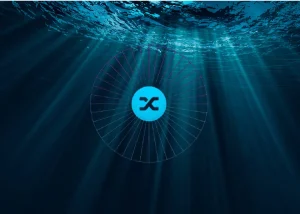The United States just rolled out a hefty bundle of sanctions against Russia. I’m talking a full-on smackdown in response to some pretty heavy stuff, including the sad case of opposition leader Alexei Navalny’s death and the ongoing Ukraine invasion saga. This time around, over 500 people and entities are feeling the heat. The US is clearly aiming to crank up the pressure on Moscow like never before.
The Treasury Department is pointing fingers at nearly 300 folks and companies, the State Department is adding over 250 to their naughty list, and the Commerce Department is tagging more than 90 companies as ones to watch out for. It’s a well-coordinated strike across the board.
The Big Players in the Sanctions Game
First up, let’s talk Sovcomflot, Russia’s top tanker group. The US accuses them of playing dirty with the G7’s price cap on Russian oil. They’re being called out for outright violations and sneaky dealings. This includes 14 crude oil tankers that are now under scrutiny. The goal? To cut down Russia’s oil revenue, which is a major financial fuel for the Ukraine invasion efforts.
But the US is throwing a bone too – a general license that allows for the offloading of crude oil and other cargoes from these vessels for a limited time. It’s an impressive strategy that allows some breathing room while keeping the pressure dialed up.
Next point of attack was Russia’s financial markets. The Treasury Department is hitting the National Payment Card System, the brains behind the Mir payment system, with sanctions. Why, you ask? Because, apparently, Mir has become a critical workaround for Russia, especially after US rivals pulled the plug on their operations in the country. This move is aimed at cutting off Russia’s escape routes from the sanctions web and keeping them from sneaking back into the global financial party.
And it doesn’t stop there. A whole lineup of Russian banks, investment firms, and fintech companies are getting the cold shoulder too. This includes SPB Bank, a big player in Russia’s stock exchange game, known for its dealings in foreign shares.
The US is also targeting Russia’s future moves in the energy sector. The Arctic LNG 2 project is under the microscope, with sanctions aimed at choking Russia’s future energy exports. Companies involved in constructing specialized LNG tankers for this project are getting a special mention, signaling a clear intent to freeze Russia’s ambitions in the Arctic.
Dodging and Weaving Through Sanctions
Now, onto the crafty business of sanctions evasion. The US is casting a wider net, calling out entities based not just in Russia but in China, Turkey, the UAE, and Kazakhstan for helping Moscow dodge the sanctions bullet. This includes firms shipping microelectronics and other goodies Russia needs for its military toys. Clearly, the US is getting serious about plugging the leaks in the sanctions dam.
Last but certainly not least, let’s talk about the military mash-up between Russia and Iran. The United States has imposed sanctions on Iran’s Ministry of Defense and Armed Forces Logistics (MODAFL). This action is taken under a Russia-specific authority, marking the first time MODAFL faces US sanctions in this context. The sanctions are a direct response to the transfer of munitions and drones between Iran and Russia, highlighting a concerted effort by both nations to support military operations in Ukraine with advanced weaponry.
The US Treasury has identified and targeted a network operating within Russia’s Alabuga Special Economic Zone, a key hub for the acquisition and production of these Iranian-designed drones. This network’s activities include the financing and manufacturing of “kamikaze drones,” intended for use in the ongoing conflict in Ukraine, showcasing a clear breach of international sanctions and a direct involvement in the militarization efforts against Ukrainian forces.





